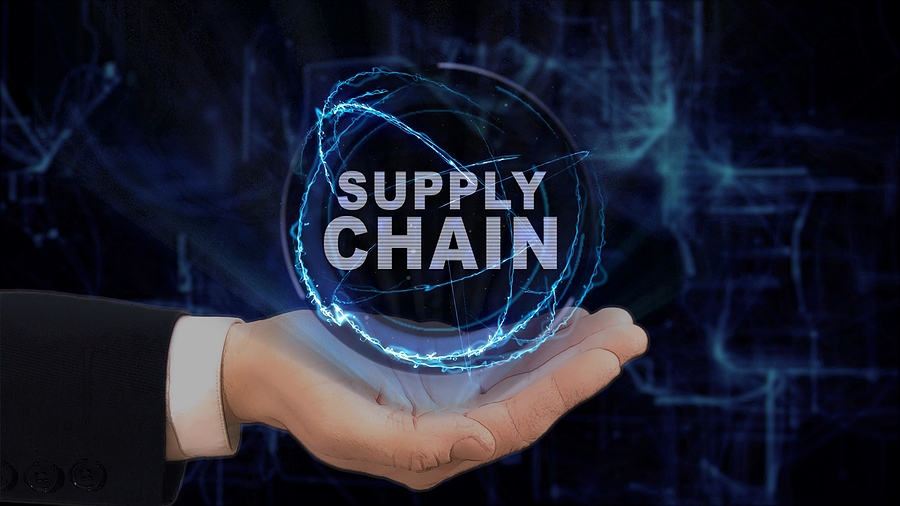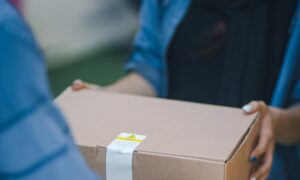Inventory often changes hands many times while moving from source to destination — to warehouses, retail locations, and customers. In the new normal, those transactions must happen with minimal person-to-person interaction. At the same time, e-commerce orders have skyrocketed, and customers expect their items to arrive quickly and in perfect condition.
Smart lockers offer employees and customers a reliable way to deliver, accept, and return a wide variety of items. The automated, self-serve technology behind these lockers prioritizes user safety while flawlessly securing the movement of goods from one location to another.
Let’s take a look at how this contactless solution improves safety, security, and efficiency throughout the supply chain.
Streamline shipments and safely stock stores
Smart lockers expedite the transfer of items from warehouses to keep stores safely stocked. Here are some of the benefits for delivery personnel:
- Easily-accessible smart lockers help drivers complete retail deliveries faster — they simply deposit shipments into secured compartments and continue on their way.
- The self-serve nature of the lockers means that drivers don’t need to rely on staff to accept or assist with the delivery, so they won’t have any trouble staying on schedule (and respecting social distancing guidelines).
- Lockers support off-hours deliveries (when businesses are typically closed), allowing drivers to deposit items during low-traffic hours and avoid contact with customers.
As each shipment arrives, employees at the retail site receive notifications. They can then move the items along to store shelves or keep them secured inside the lockers. In this way, smart lockers help retail stores transition into transportation hubs and keep more of their inventory close.
With oversized and refrigerated compartments available, smart lockers are especially useful for items you wouldn’t want to leave sitting around on a warehouse shelf or in the back of a retail store, such as:
- High-value electronics and equipment
- Fragile and delicate products (e.g., glass, paper, and artwork)
- Perishable items (e.g., temperature-sensitive foods and medications)
Swiftly secure the last yard with BOPIS
The last stage of the journey often involves handing off products to the customer, but doing so while maintaining a safe physical distance can be a challenge. That’s why buy online, pick up in-store (BOPIS) has rapidly gained popularity this year. It’s a contactless way for stores to keep their doors open and continue transferring inventory to customers.
And smart lockers give BOPIS a boost. Instead of picking up items at a customer service desk or using curbside pickup, customers can retrieve their orders all on their own. They don’t have to interact with a cashier, delivery driver, or other staff members — they don’t even have to touch a kiosk. So they feel safer shopping under restricted circumstances.
How does this benefit retailers?
- Let’s face it, retail employees are busy people — especially during times when stores are facing staffing shortages and struggling to keep items in stock. With smart lockers, essential staff won’t be torn away from other tasks to assist with pickups.
- Lockers make the pickup process simple and convenient, which completes a positive shopping experience. And satisfied customers are more likely to use BOPIS again and again, thereby increasing store sales.
- Without the long lines at registers and service desks, it’s easier for stores to cut down on congestion and enforce social distancing. And customers are more likely to use BOPIS services for the first time if they know they can avoid pickup lines.
Cut delivery times with locker hubs
BOPIS is particularly useful for high-value and perishable items that customers don’t want to risk delivering to the homes. But in many cases, delivery to a residence or business is still the most convenient option. However, since the growth rate of e-commerce is not showing any signs of slowing down, this method is becoming increasingly burdensome for logistics companies and package management staff.
A centralized smart locker system provides a single dropoff location for multiple deliveries, so drivers and property staff don’t have to go door-to-door to complete the chain of custody. This results in fewer stops and reduced delivery times. For example, a pilot test at a 62-floor building found that a common carrier locker system decreased delivery times by 78% and completely eliminated delivery failures.
Smart lockers offer several benefits for customers, too:
- They promote social distancing. Recipients can have items delivered to their home or work addresses without coming in contact with delivery personnel.
- Packages aren’t left unattended. If recipients aren’t present or prefer to have packages held for a while, smart lockers allow for such flexibility without putting deliveries in danger of theft.
- Notifications let customers know when their orders have arrived. They stay informed and can rest assured that their items will be protected until they can retrieve them.
- The user-friendly system makes picking up packages a breeze. It’s as simple as scanning a QR code or tapping a button in an app.
Promote contactless customer returns
As e-commerce sales rise, returns are bound to increase, too. And customers will be looking for a safe, easy way to send orders back to the store or warehouse.
Whether through a hub location or retail store, smart lockers can facilitate the return process for unwanted, flawed, or faulty products:
- Retailers initiate the return process through their system.
- They provide customers with codes and instructions for depositing the items into a nearby locker hub or store locker system.
- Store staff or logistics companies will receive an alert when dropoff is complete.
- The returned items are now ready to move to the next destination.
By returning their orders through smart lockers, customers don’t have to make trips to the post office or interact with staff members at a customer service desk.
Simplify returns from retailer to warehouse
Unwanted, damaged, and defective products often need to go back to the warehouse for repair and resale. And smart lockers easily support that transition.
Retailers can use smart lockers to secure returned items and keep them separate until a driver is available to bring them to a warehouse location. It takes just seconds for a customer or retail employee to place the products into a locker and go about their day.
Just like dropoffs, picking up returns is quick and contactless. The automated system keeps drivers informed of when items are ready for pickup. And they can save time by retrieving those returns during their scheduled store delivery trips.
In all these supply chain stages, the automated system tracks every transaction, providing administrators with detailed digital reports in real-time.
Want to make smart lockers part of your supply chain? Contact us today.




